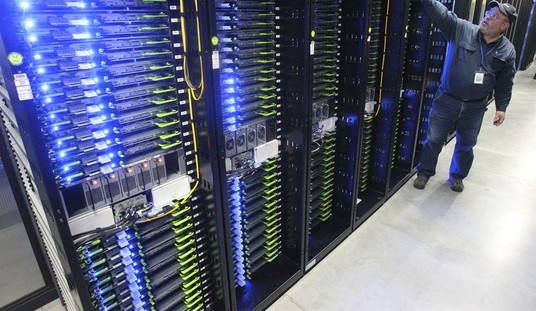“If you build a better mousetrap, the world will beat a path to your door.” Judging from his comments regarding ATMs and unemployment, President Obama blames the better mousetrap for 400,000 out-of-work cats. Cats who are starving for the lack of mice.
Creative destruction is a necessary and vital feature of a healthy and free capitalist economy. Business people intuitively know and embrace it (or at least they should). Smart workers anticipate it.
Creative destruction is the mechanism by which labor and capital are redeployed to more efficient uses. It’s how a healthy capitalist economy reinvents itself, rewarding the flexible and efficient while penalizing those who say “But this is how it’s always been done”.
My Dad was a worker who experienced three separate cycles of innovation and creative destruction in his career of almost 40 years. His story is below the fold.
After World War II, Dad went to watchmaking school on the GI Bill. Once upon a time, everyone carried a mechanical wristwatch or pocketwatch that needed to be cleaned at least once a year. His home state, Iowa, had the most restrictive Board of Watchmaking this side of Switzerland. Watchmakers did quite well.
Then Japan invented the Timex, a cheap, mass-produced watch which they exported by the millions. Overnight, Americans could buy a new watch for little more than the cost of cleaning an old one. A recession in the early ’50s forced Dad to give up on his little jewelry and watchmaking business; he had a family to feed, and he needed a job.
A jeweler’s engraving skills translated well to hand lettering with pen & ink, so Dad hired on as a map draftsman for an oil company. He and several other draftsmen toiled like so many medieval monks to maintain detailed maps of all the oil wells drilled in Kansas, Oklahoma and the entire MidContinent. Some were giant wall-sized maps made of linen.
Cheap computers and workstations rendered hand drafting obsolete by the early ’80s. CAD and mapping software enabled accurate updates in the blink of an eye. Dad’s steel nibs and India ink were replaced by a digitizing tablet and a mouse.
So Dad became the company illustrator, adapting his graphic skills to cartooning and commercial art in the company’s headquarters office. One of his tasks was preparing 35mm slides for the company’s board meetings. He would start weeks in advance because of multiple iterations the executives would go through to perfect their slide presentations. The process took so long that by the time of the presentation, the numbers were stale.
Along came PowerPoint, followed by a gold watch and a handshake.
Businesses in a capitalist system do not exist for the purpose of employing people. Businesses exist for the purpose of creating value. If a business is efficient and well-run, it will be a net creator of jobs (and collective prosperity) even if it destroys some outmoded jobs in the process.
Dad is 86 now, and has been happily retired for 25 years. He never relished changing directions or retraining; he did it out of economic necessity. No government programs bailed him out; instead, he took a correspondence course at night from the “Draw This Pirate” art school to help in his transition to commercial art.
Even if it didn’t seem like it at the time, each of Dad’s involuntary career moves worked out for the best. Instead of struggling to make ends meet as an independent jeweler, he went to work for a profitable company that could provide him with security and great benefits, including family health insurance, a college scholarship for me, and a comfortable pension for his (and my Mom’s) senior years.
These are the fruits of our capitalist system, and a life well spent.
P.S. While we’re at it, Happy Father’s Day. Vladimir Steve
Cross-posted at stevemaley.com.













Join the conversation as a VIP Member